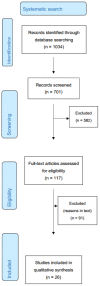Belgian Consensus Recommendations to Prevent Vitamin K Deficiency Bleeding in the Term and Preterm Infant
- PMID: 34836364
- PMCID: PMC8621883
- DOI: 10.3390/nu13114109
Belgian Consensus Recommendations to Prevent Vitamin K Deficiency Bleeding in the Term and Preterm Infant
Abstract
Neonatal vitamin K prophylaxis is essential to prevent vitamin K deficiency bleeding (VKDB) with a clear benefit compared to placebo. Various routes (intramuscular (IM), oral, intravenous (IV)) and dosing regimens were explored. A literature review was conducted to compare vitamin K regimens on VKDB incidence. Simultaneously, information on practices was collected from Belgian pediatric and neonatal departments. Based on the review and these practices, a consensus was developed and voted on by all co-authors and heads of pediatric departments. Today, practices vary. In line with literature, the advised prophylactic regimen is 1 or 2 mg IM vitamin K once at birth. In the case of parental refusal, healthcare providers should inform parents of the slightly inferior alternative (2 mg oral vitamin K at birth, followed by 1 or 2 mg oral weekly for 3 months when breastfed). We recommend 1 mg IM in preterm <32 weeks, and the same alternative in the case of parental refusal. When IM is perceived impossible in preterm <32 weeks, 0.5 mg IV once is recommended, with a single additional IM 1 mg dose when IV lipids are discontinued. This recommendation is a step towards harmonizing vitamin K prophylaxis in all newborns.
Keywords: preterm; prophylaxis; term; vitamin K; vitamin K deficiency bleeding.
Conflict of interest statement
The authors declare no conflict of interest.
Similar articles
-
Position Statement: Guidelines for vitamin K prophylaxis in newborns: A joint statement of the Canadian Paediatric Society and the College of Family Physicians of Canada.Can Fam Physician. 2018 Oct;64(10):736-739. Can Fam Physician. 2018. PMID: 30315016 Free PMC article.
-
Refusal of Intramuscular Vitamin K by Parents of Newborns: A Review.Hosp Pediatr. 2020 Mar;10(3):286-294. doi: 10.1542/hpeds.2019-0228. Epub 2020 Feb 4. Hosp Pediatr. 2020. PMID: 32019806 Free PMC article. Review.
-
Increasing the dose of oral vitamin K prophylaxis and its effect on bleeding risk.Eur J Pediatr. 2019 Jul;178(7):1033-1042. doi: 10.1007/s00431-019-03391-y. Epub 2019 May 6. Eur J Pediatr. 2019. PMID: 31062090 Free PMC article.
-
Prophylactic Dosing of Vitamin K to Prevent Bleeding.Pediatrics. 2016 May;137(5):e20154222. doi: 10.1542/peds.2015-4222. Pediatrics. 2016. PMID: 27244818
-
The challenge to define the optimal prophylactic regimen for vitamin K deficiency bleeding in infants.Acta Paediatr. 2021 Apr;110(4):1113-1118. doi: 10.1111/apa.15566. Epub 2020 Oct 6. Acta Paediatr. 2021. PMID: 32892390 Review.
Cited by
-
Riboflavin for women's health and emerging microbiome strategies.NPJ Biofilms Microbiomes. 2024 Oct 18;10(1):107. doi: 10.1038/s41522-024-00579-5. NPJ Biofilms Microbiomes. 2024. PMID: 39420006 Free PMC article. Review.
-
New insights into vitamin K biology with relevance to cancer.Trends Mol Med. 2022 Oct;28(10):864-881. doi: 10.1016/j.molmed.2022.07.002. Epub 2022 Aug 23. Trends Mol Med. 2022. PMID: 36028390 Free PMC article. Review.
References
Publication types
MeSH terms
Substances
LinkOut - more resources
Full Text Sources
Medical


